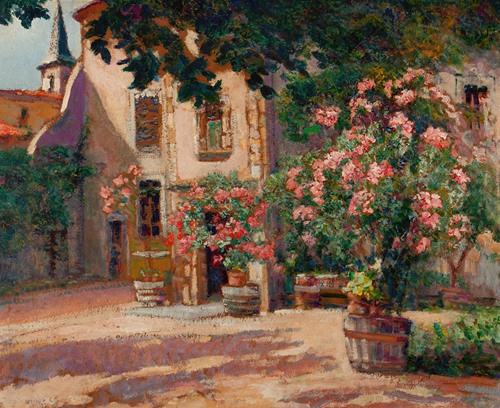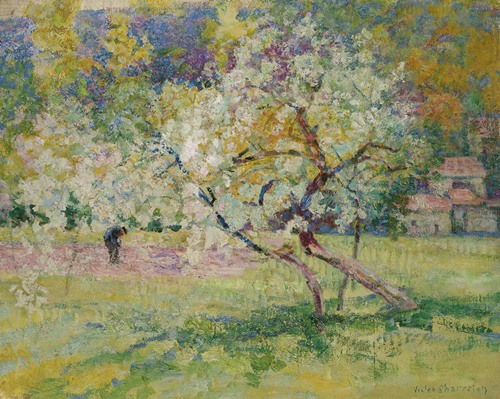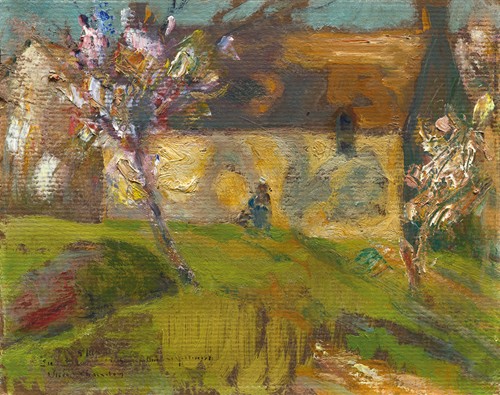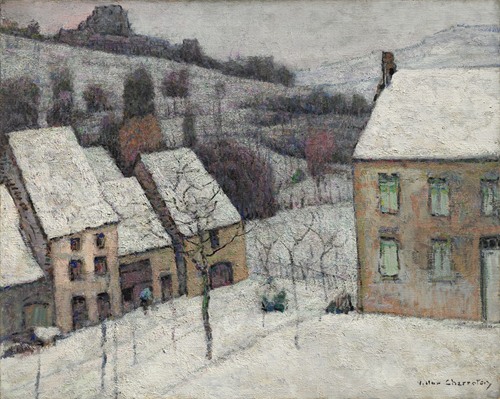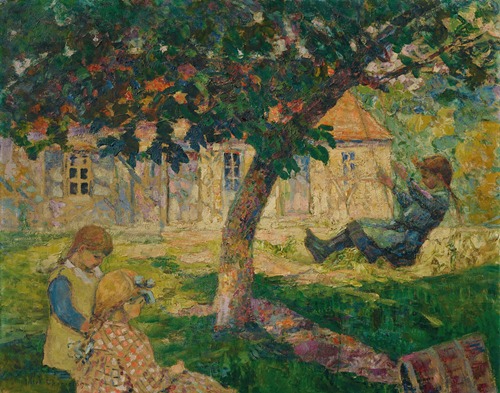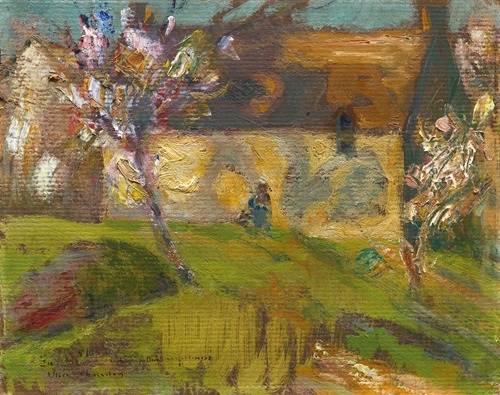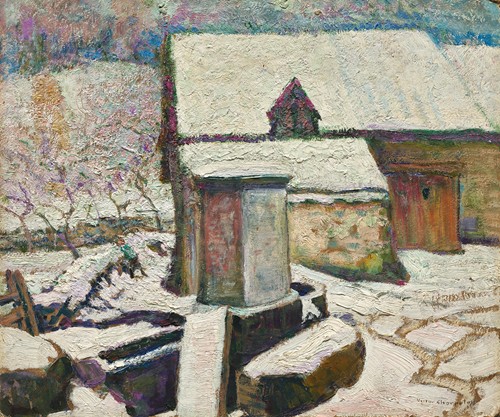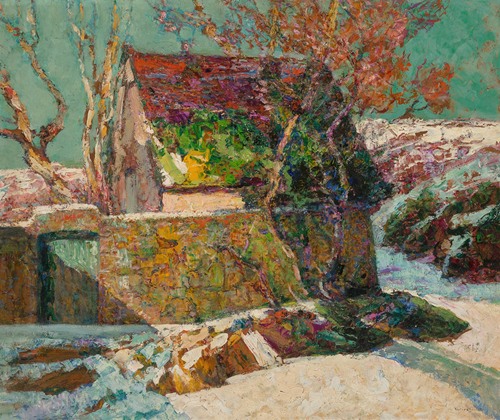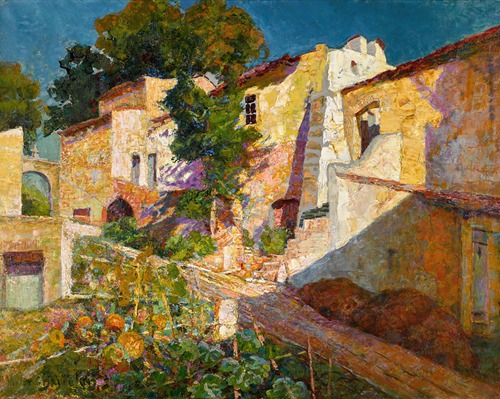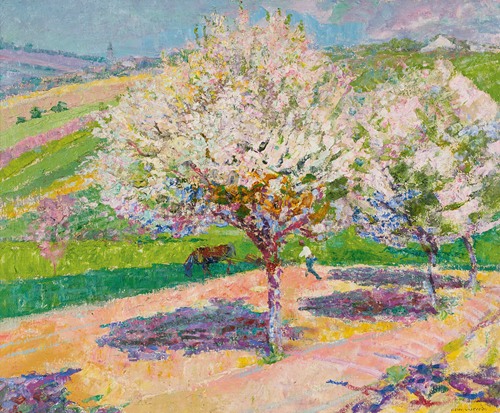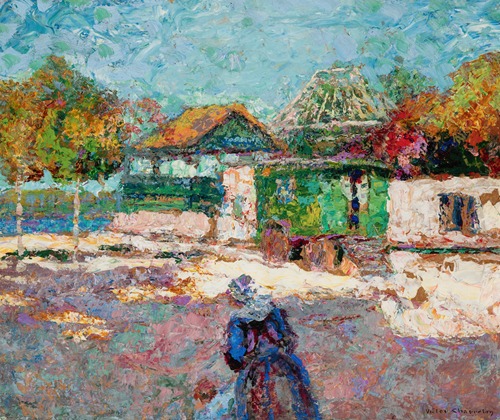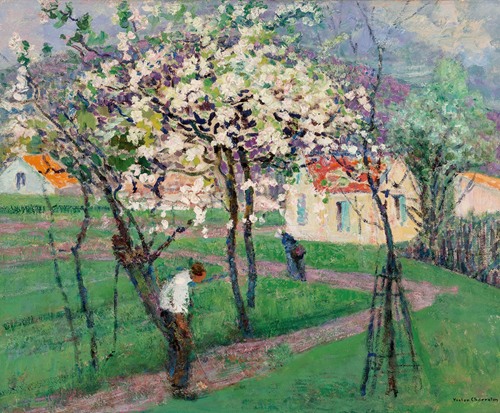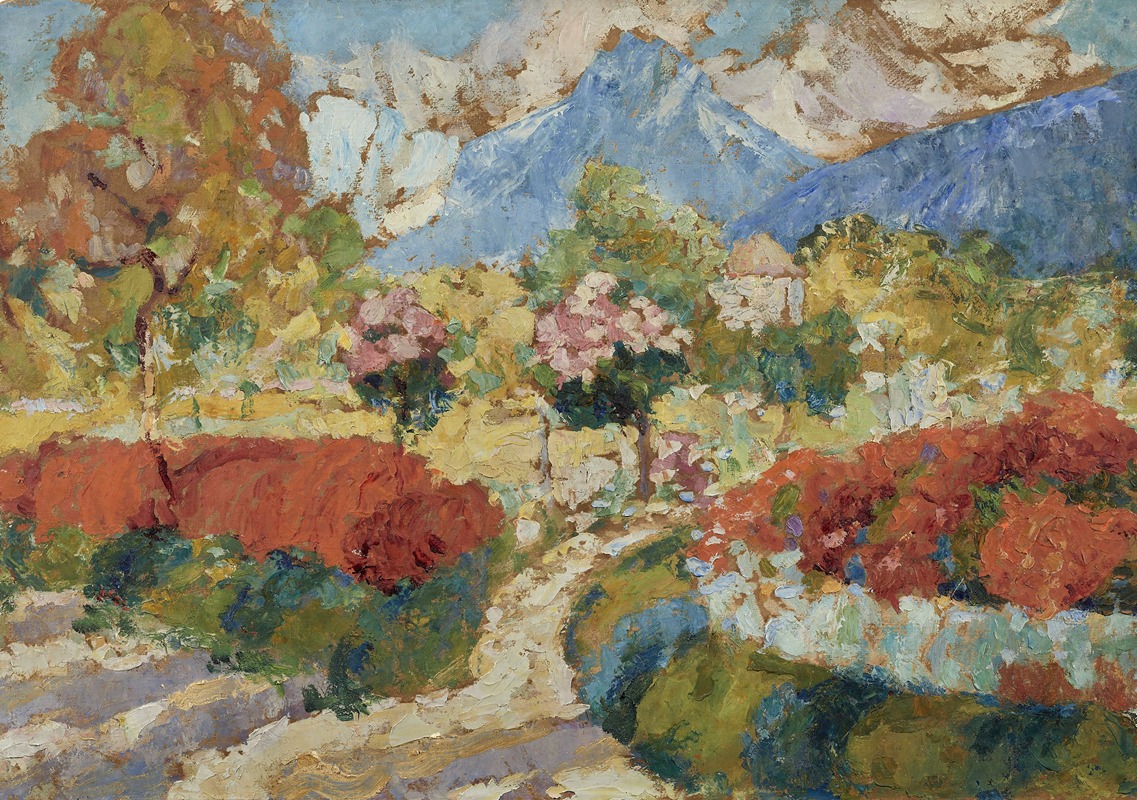

Victor Charreton was born in Bourgoin (Isère, France) on March 2nd, 1864.
After studying law in Paris, he practised in Paris and Lyon. In the end he totally devoted himself to painting.
In 1902 he moved to Paris where he studied with Ernest Victor Hareux and Louis Aime Japy, both of whom were early influences on his work.
He found his inspiration in Paris and during his travels throughout France. He painted in Montmartre, the Garden of the Luxembourg, the Park Montsouris, Provence and Brittany. Moreover, he traveled to Algeria in 1905, and in 1913 he found himself at one point or another in Spain, England, Belgium and Holland.
Charreton started exhibiting in 1894 in Lyon, with a painting entitled 'Matin a Montpeyroux', and later on in the same year in Paris at 'the Salon des Artistes Francais', with 'Soir d'Octobre'.
He was awarded prizes and medals from 1910 onward, a 'mention honorable' in 1910, a silver medal in 1912, and a gold medal in 1913. Charreton was one of the founding members of the Show of Autumn (Salon d'Automne), and was made knight of the Legion of Honour in 1914.
He participated in many exhibitions in France and abroad, in New York (from 1919 - 1925), Toledo (1926, 1934), Pittsburgh (1933), Cleveland (1934), and in Japan (1920, 1928). In 1931, he founded a museum mainly devoted to his paintings, the Musée Victor Charreton.
He was a teacher at the Académie Julian in Paris from 1919 until 1925.
Victor Charreton is famous for his landscapes and still-life paintings, often sharing Impressionist preoccupations whilst trying to capture momentary effects of specific times of day or seasons, at sunset or in a snowy landscape.
Charreton died on November 26th, 1936, at the age of 72.
